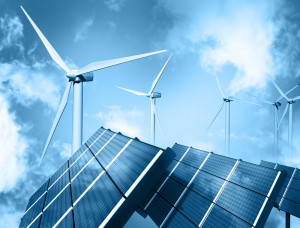 Glenn Barnes is a Senior Project Director with the Environmental Finance Center at The University of North Carolina at Chapel Hill.
Glenn Barnes is a Senior Project Director with the Environmental Finance Center at The University of North Carolina at Chapel Hill.
For the past several years, the Environmental Finance Center has worked to set up energy efficiency and renewable energy finance programs around the country as a technical assistance provider to the US Department of Energy. These programs range from energy improvements for the sponsoring entity’s own operations to programs that encourage clean energy in the community at large.
For communities interested in establishing these types of programs, the process is less about selecting from one of a handful of “off the shelf” program designs and is rather about making a series of choices that shape the final program design.
The major decision points in designing an energy efficiency or renewable energy finance program are:
- Who sponsors the program?
Across the country, we have seen energy finance programs sponsored by units of government (state, local, and tribal), by non-profit organizations, by for-profit companies, and by utilities (investor owned, municipal, and cooperative). Each potential type of sponsor has advantages and disadvantages. Local governments, for example, are stable institutions with natural audiences, but they have limited number of potential customers (their citizens and businesses) and may have strict procurement rules to follow. By contrast, non-profit organizations have far greater flexibility in terms of their customer base and services offered, but may not have easy access to capital.
- What suite of services is offered?
These sponsors next have to decide what type of programs they will offer. Will they focus only on their own operations, or on the larger community? Will the program incentivize residents and businesses to make energy improvements through rebates and loans? Or will the program help to build up the clean energy contractor community through trainings and certifications? Or perhaps some or all of the above? Program sponsors have found numerous successful ways to encourage clean energy investments by mixing and matching various program offerings.
- Who administers the program?
Once the sponsor decides on the program activities, it must next decide who will administer those activities. The sponsor may have the internal capacity and expertise to carry out all aspects of program administration, or it may choose to hire outside help for some or all activities. For example, a local government or non-profit operating a clean energy lending program may hire financial institutions to underwrite loans. Or a utility may hire a well-known community organization to assist with driving program demand.
The question of whether or not to hire program administration help is as much about the ability of the sponsor to handle the program activities as it is about its willingness to do so as well. Some local governments, for example, are weary to do collections in the case of a missed loan payment, so they may contract with a local bank to do so on their behalf.
- What is the geographic scope of the program?
To ensure the long-term success of the energy finance program, the sponsor must decide what the geographic scope of the program will be. Programs that can serve a larger geographic scope are more likely to find potential customers and achieve economies of scale. Having one larger program instead of several smaller programs can also reduce duplication of effort and may be easier for contractors and program partners.
- Is the program designed to be financially sustainable?
Finally, the sponsor must determine if the program will be structured in a sustainable way that allows it to re-use program funds and/or generate new program revenue? Programs with sustainable designs such as internal revolving energy funds, external revolving loan funds, and loan loss reserve pools can re-use the seed funds over and over, allowing for a greater number of projects to be accomplished with the initial investment. By contrast, program designs that use money only once such as rebates and interest rate buy-down require continuous streams of capital to maintain operations. Regardless of whether the seed funds can be re-used, all program designs require ongoing administration, so programs set up with, for example, project fees or charges for services are better able to operate over time.
The DOE will soon be releasing a paper on structuring clean energy programs that was written by the EFC, and the EFC will be presenting on a DOE webinar this Thursday, November 21, on clean energy program structures, understanding returns on investment, and identifying potential sources of program capital. You can register for the free webinar here:
http://www1.eere.energy.gov/wip/solutioncenter/webinars.html
Finally, the Database of State Incentives for Renewables and Efficiency (DSIRE) is a great resource to learn about successful clean energy finance programs across the country.





Leave a Reply